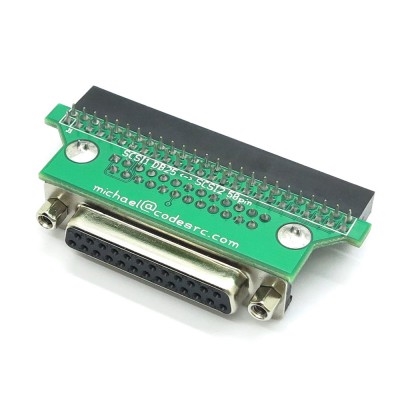It's off-topic and very "that guy" of me, but did I just come from the Berenstein Bears universe or is calling what the ZuluSCSI has an "IDC" connector a fairly new thing? To me it's a "header connector", 50-pin, two-row, shrouded in the ZuluSCSI's case. ("Header connector" or "pin header" or "SCSI header" also works here.)
I can't tell you the history, but I know I've been using it for ages - largely because 'two row pin header, 50 pin, 2.54mm, shrouded, keyed' is such a long phrase for such a small component, especially when I'm specifying something that is directly intended to mate with an IDC
sensu stricto. I think this is just a natural process of language where a narrow subset of a broad class of thing becomes common in its own right (in this case, IDCish board connectors against headers as a whole) - one wouldn't, after all, specify a chicken by saying 'it's a bird' followed by listing all its phylogenetically relevant characteristics, one would just say "chicken". Even, say, an evolutionary biologist will refer to it as a chicken unless they have a reason to be more specific.
IDC is "insulation displacement connector", which is to say
those little pinchy knives that let clip-on headers and D-sub connectors bite into ribbon cables or other kinds of wires. On circuit boards there is no insulation being displaced in this way.
Again, I think the relevant process here is a linguistic one, not an engineering one. English doesn't really distinguish between attributes that
define something and those that
describe something - even the distinction between 'that' and 'which' is basically dead in the spoken language in many speakers. So the distinction between "a connector that displaces insluation" and "a connector that is relevant to other connectors that displace insulation" is something that the grammar is very poorly served to represent - and so they end up sounding the same.
(edit: sorry,
@bigmessowires, for the thread derail! Agree with people above who say that it's to use a zip-style cable. I've had luck with cheap 25-pin D-type gender changers of the kind one in multi-packs - or you could probably mount a male 25-pin d-type on the adapter board upside-down? Parallel-type 25 pin cables will only work if you're lucky, they're often made extremely cheaply. It doesn't matter so much for the gender changers because the distance is so small)



